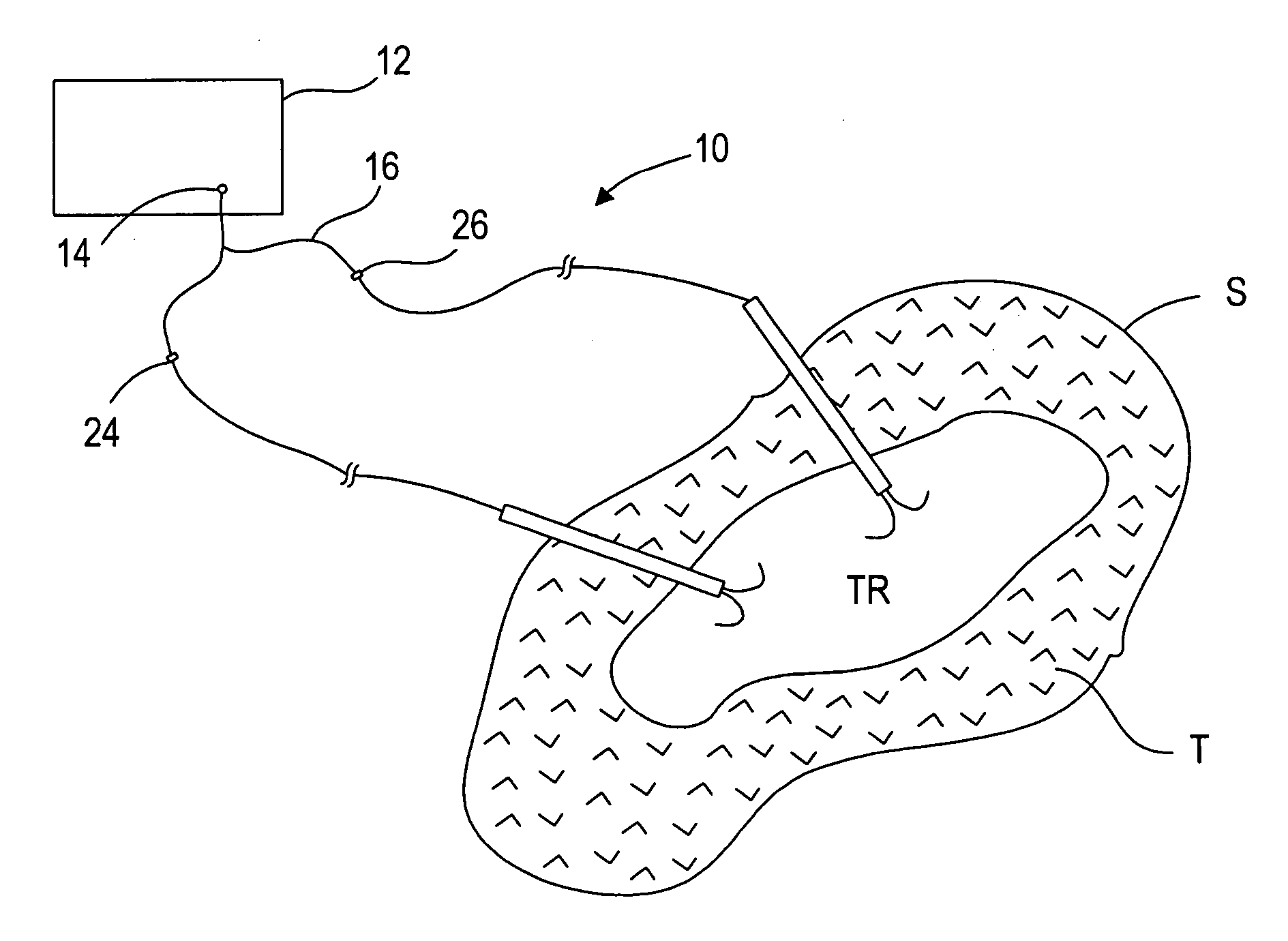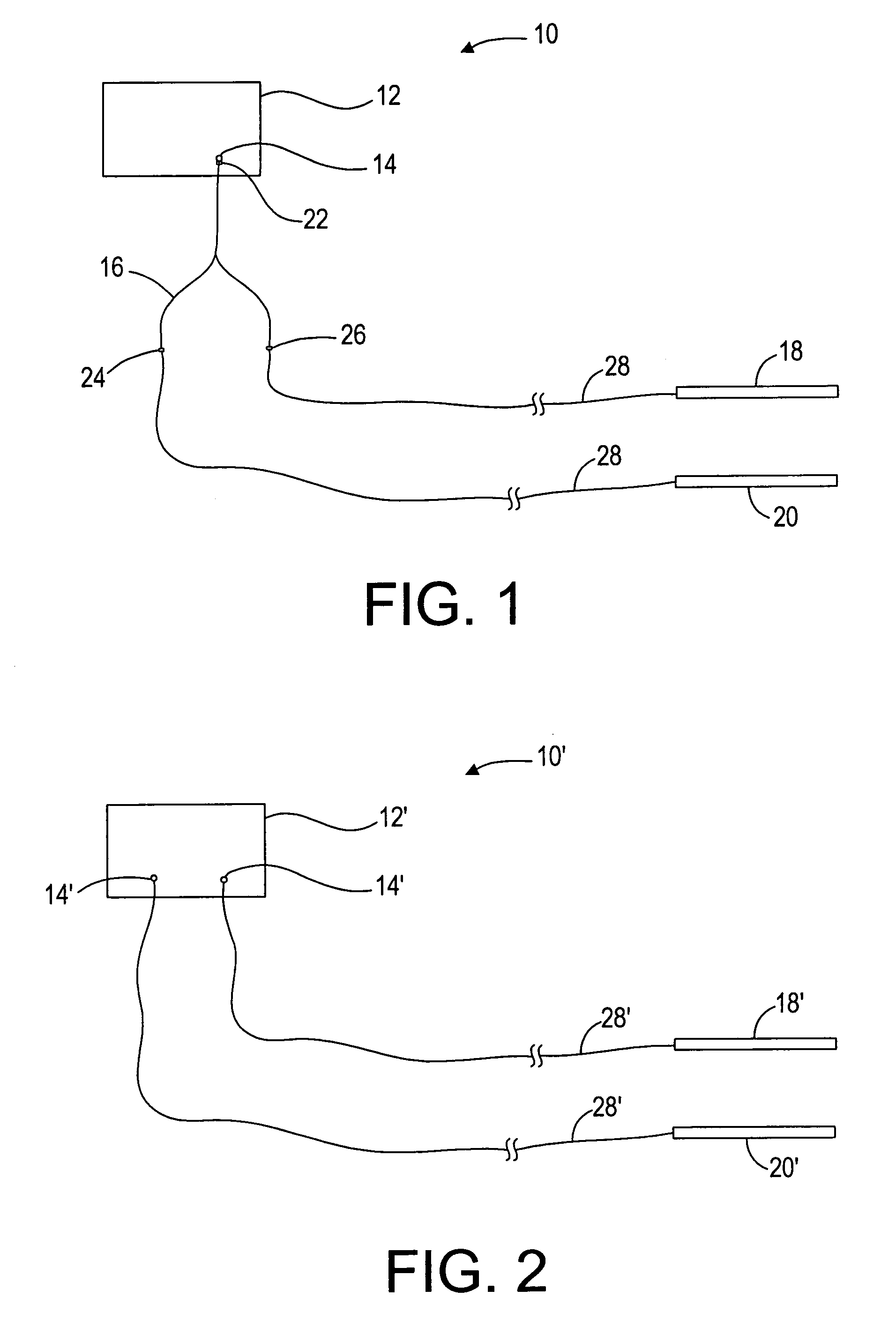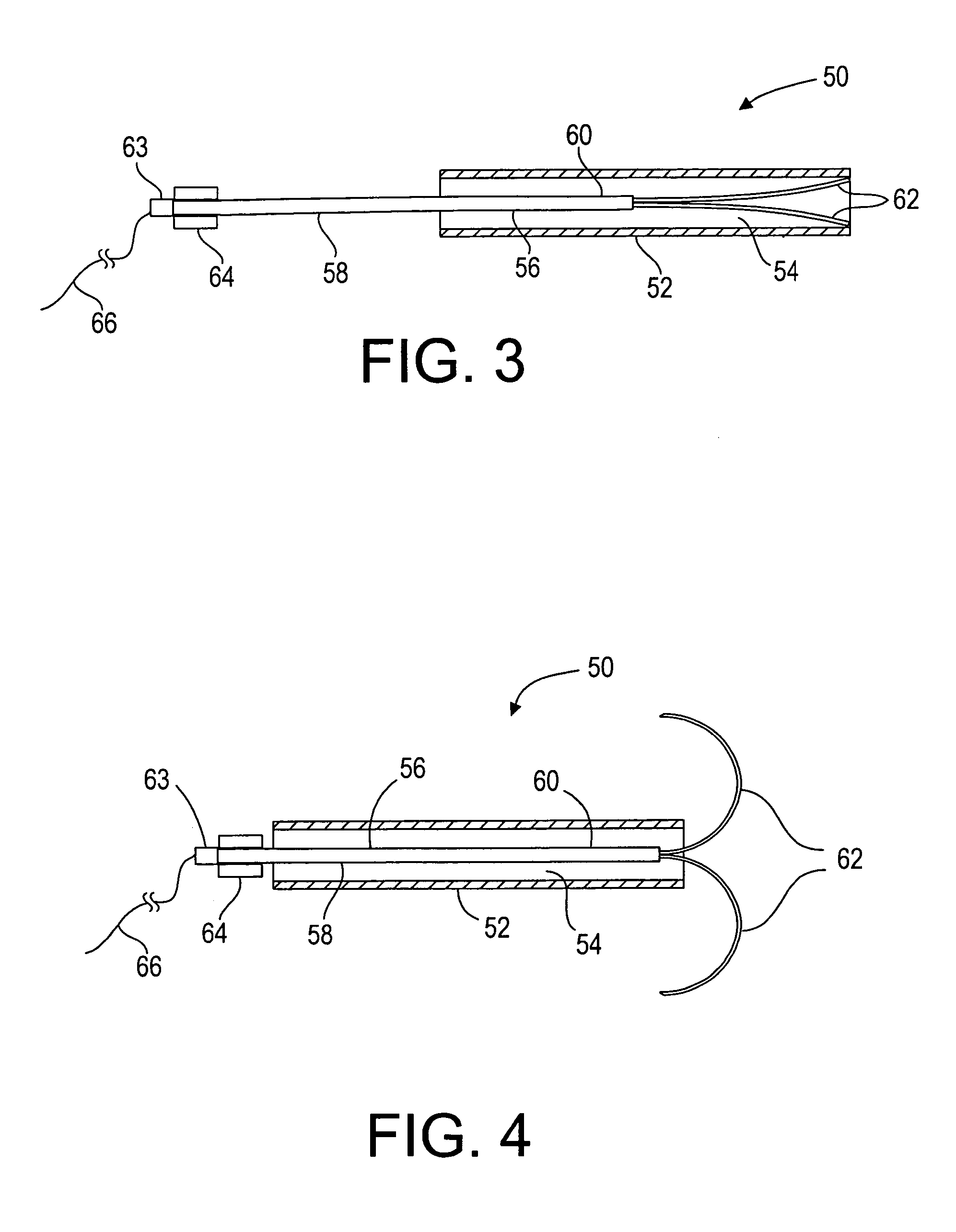Systems and methods for performing simultaneous ablation
a technology of simultaneous ablation and tissue, applied in the field of medical devices, can solve the problems of reducing the electrical conductivity of the lesion, limiting the volume of tissue, and limiting so as to increase the size of the lesion created
- Summary
- Abstract
- Description
- Claims
- Application Information
AI Technical Summary
Benefits of technology
Problems solved by technology
Method used
Image
Examples
Embodiment Construction
[0025]Referring now to the drawings, in which similar or corresponding parts are identified with the same reference numeral, FIG. 1 shows a preferred embodiment of an ablation system 10, in accordance with the present invention. The ablation system 10 includes a source of energy 12, e.g., a radio frequency (RF) generator, having an output terminal 14, a connector 16, a first ablation device 18, and a second ablation device 20. One or both of the first and the second ablation devices 18, 20 may be capable of being coupled to the generator 12.
[0026]The generator 12 is preferably capable of operating with a fixed or controlled voltage so that power and current diminish as impedance of the tissue being ablated increases. Exemplary generators are described in U.S. Pat. No. 6,080,149, the disclosure of which is expressly incorporated by reference herein. The preferred generator 12 may operate at relatively low fixed voltages, typically below one hundred fifty volts (150 V) peak-to-peak, a...
PUM
 Login to View More
Login to View More Abstract
Description
Claims
Application Information
 Login to View More
Login to View More - R&D
- Intellectual Property
- Life Sciences
- Materials
- Tech Scout
- Unparalleled Data Quality
- Higher Quality Content
- 60% Fewer Hallucinations
Browse by: Latest US Patents, China's latest patents, Technical Efficacy Thesaurus, Application Domain, Technology Topic, Popular Technical Reports.
© 2025 PatSnap. All rights reserved.Legal|Privacy policy|Modern Slavery Act Transparency Statement|Sitemap|About US| Contact US: help@patsnap.com



